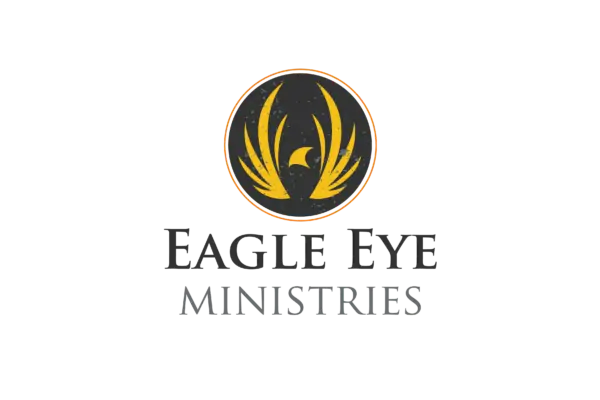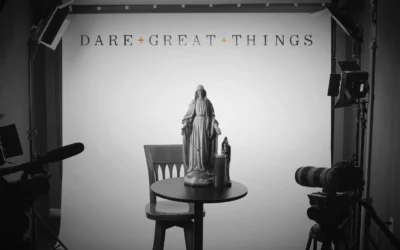[vc_row][vc_column][vc_column_text css=”.vc_custom_1651180328933{padding: 20px !important;background-color: rgba(255,255,255,0.45) !important;*background-color: rgb(255,255,255) !important;}”]
Do you know the value of your profession or vocation? Simon Sinek’s “Golden Circle” theory poses a fascinating way to evaluate your messaging or branding. Your implementation step is to apply the “Why” theory to a product or message in which you are engaged.
Please review the following article.[/vc_column_text][/vc_column][/vc_row][vc_row][vc_column][vc_column_text]Why is Apple so much more innovative than its competitors? Why did the Wright Brothers, not more qualified or highly financed flight students, make the first flight? Simon Sinek, professor at Columbia University and leadership speaker, has not merely asked these questions, but posed a theory about why. What happens when we relate his reasoning to the mission of the Church?
THE GOLDEN CIRCLE THEORY
Sinek describes “a golden circle,” explaining why some people inspire and some people, well, fail to inspire. Imagine a circle with another circle around it and another circle around that. These circles represent different ways of thinking and articulating our actions. The innermost circle is the “Why,” Sinek explains, the middle circle is the “How,” and the outer circle is the “What.”
Everybody on the planet knows what they do, according to Sinek, but fewer can actually and artfully explain how they do it. Even fewer can confidently and eloquently explain why they do what they do— the purpose (not the profit) for their organization. But the best entrepreneurs and innovators are people who are convicted about their Why. They start with that innermost circle. They communicate that. That’s what gets them out of the bed in the morning, Sinek says.
The recipe for success, according to Sinek, is not fundamentally about money, market conditions, or knowing the right people, but about belief— about passion in changing the course of the world.[/vc_column_text][vc_column_text]
CHRIST’S WHY
Sinek’s fundamental claim is that people don’t buy What you do. They buy Why you do it. Interestingly, Christ proposes something similar: He offers His disciples a mission, and He starts with the Why.
What is Christ’s Why? At the Last Supper, Christ cuts to the core of His message of personal, Trinitarian love. “And he took a cup, and when he had given thanks, he gave it to them, saying, ‘Drink of it, all of you; for this is my blood of the covenant, which is poured out for many for the forgiveness of sins’” (Matthew 26: 27-28).
Christ’s love for us impelled Him to save us from our sins. The Incarnation and the Redemption, the fact that we have been reconciled to the Father and given new life by Christ, changes the very structure of our existence. This is Christ’s Why offered to the disciples, a Why that made all the difference.[/vc_column_text][vc_column_text]
THE PLACE OF MISSION IN THE CHURCH: FIRST WHY, THEN HOW
In fact, to carry Sinek’s theory further, Christ explains the Why before the How. The How is important too, but it will come later on for the disciples: “The Holy Spirit will teach you what to say” (Luke 12:12). The Catechism of the Catholic Church affirms that the How of living out a covenant with God has a mysterious, hidden character:
From the beginning until “the fullness of time,” the joint mission of the Father’s Word and Spirit remains hidden, but it is at work. God’s Spirit prepares for the time of the Messiah. Neither is fully revealed but both are already promised, to be watched for and welcomed at their manifestation. So, for this reason, when the Church reads the Old Testament, she searches there for what the Spirit, “who has spoken through the prophets,” wants to tell us about Christ.
Even in the New Testament, the How comes gradually through the Holy Spirit, revealing that there is a primacy of mission—of Why— in the Church. It took the Church hundreds of years to sort out the How of living a Christian life. The early Church Fathers lived close to the time of Christ and had a special connection to his message, yet they still struggled to discover and explain how a Christian should implement Christ’s Why in his life. The Church Fathers approached their task in different ways, making many mistakes, as they groped for the How of the Christian life. Their commitment to Christ’s Why kept them trying!
Eventually, through the diligence of those who came before us and the inspiration of the Holy Spirit, we have discovered more fully How to live the Christian Why. The How of Christian living comes through the Holy Spirit, but only after the Why of Christ’s message. This insight reveals to us how strongly mission affects identity. Christ’s Why reaches out to us, impelling us to share the message of a covenant of love and gratuitous mercy with others.[/vc_column_text][vc_column_text]
MANIPULATE OR INSPIRE?
Sinek also talks of how there are two main ways to influence human behavior: “You can manipulate it or you can inspire it.” Starting with your Why, he says, is the best way to inspire others. Sinek’s contrast of manipulation and inspiration creates a striking parallel to the difference between the perspective of utilitarianism and the perspective of Christianity. Christianity gives us eyes to see and respond to others as gifts, resulting in a hope and joy that manifests itself in love. In contrast, the utilitarian perspective—which sees others as objects to be used, as means rather than an end— ends in manipulation.
Learning to live the gift perspective that Christ presents is key to overcoming an economy of exclusion and manipulation. Christ wants people to live fully from the Why. He wants the Why to be what motivates His Apostles out of the bed in the morning— and it did: It motivated St. Paul to work almost 24 hours a day in missionary service! This sort of service could be described as the What of Christianity: the actions of the faithful living in communion and serving each other in love.
THE MISSION OF THE CHURCH IS INSPIRED…
“All organizations start with Why, but only the great ones keep their Why clear year after year,” says Sinek. Through its ups and downs as an organization firmly placed in human history, the Catholic Church has an incredible gift: the gift of the Holy Spirit protecting the Church’s Why. This is an inspirational reality! The doctrine of infallibility explains that when the Pope definitively proclaims a doctrine of faith and morals binding on all the Faithful, he will not err. In other words, the mission of the Church is protected by Christ’s promise that the Magisterium will never fully fall away from His teachings. The Church will never lose her Why.[/vc_column_text][vc_column_text]
… ARE YOU INSPIRED?
Your life is a part of the Church’s mission, her Why. Your life is supposed to be inspirational, too. Is it? “If your actions inspire others to dream more, learn more, do more, and become more, you are a leader,” says Sinek. There’s truth in this. Leaders do help others to become more, to live their human potential more fully. Leaders in the workplace guide others’ work, and work shapes our identity as human beings.
[Twitter Link] Your life is part of the Church’s mission, her Why. Your life is meant to be inspirational. Is it? #SJIblog
As missionary evangelists, our Why is that Christ has reached out to personally redeem us in love. Our How is the inspiration of the Holy Spirit. Our What is our activity as faithful members of the mystical body of Christ. Let us be successful innovators for the Gospel, living first by the Why, like the first Apostles. As Pope Francis writes so beautifully in Evangelii Gaudium, “On the lips of the catechist the first proclamation must ring out over and over: ‘Jesus Christ loves you; he gave his life to save you; and now he is living at your side every day to enlighten, strengthen, and free you.’” This is our Why. Let’s start with that.
FOR FURTHER BRAIN FUEL:
For further reflection, consider how this quote from concentration camp survivor Viktor Frankl supports the idea that having a compelling Why is of utmost importance:
A man who becomes conscious of the responsibility he bears toward a human being who affectionately waits for him or to an unfinished work will never be able to throw away his life. He knows the why for his existence and will be able to learn the how.
[/vc_column_text][/vc_column][/vc_row]







